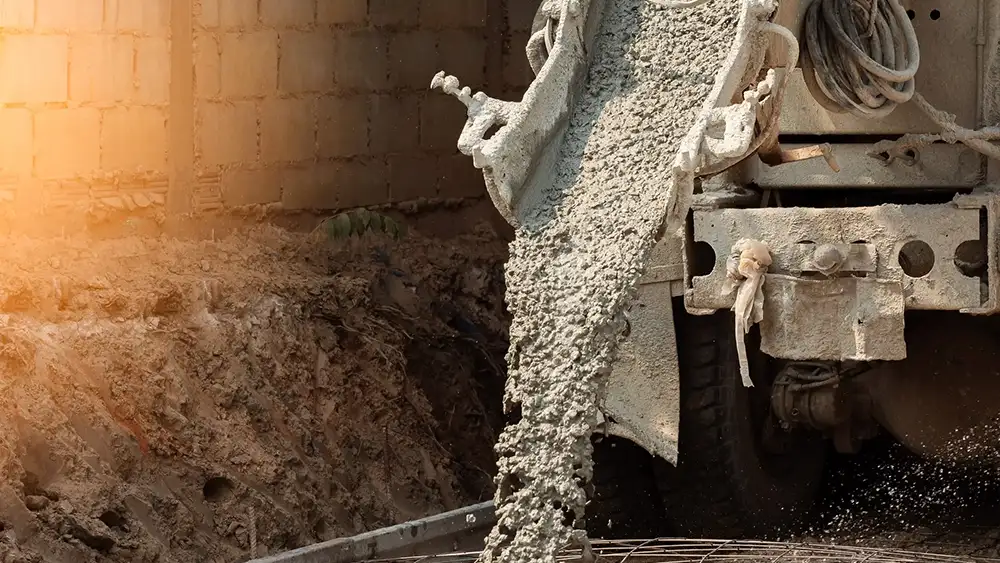Concrete is one of the most durable and widely used materials on Earth. It resists erosion, withstands harsh weather and fire, and is adaptable to nearly every climate. However, that durability comes with a cost. Concrete is difficult to get rid of when it’s no longer wanted. While recycling concrete is an option, with new projects, we recognize that some customers want to use less permanent materials that they feel are more sustainable in the future. For customers searching for more sustainable options, there have been some great advances in the pavement industry. Here are a few sustainable pavement practices to consider implementing as we forge a new future in pavement.
Recycled Asphalt
This is a popular practice that’s already widely used. It’s cost-efficient for the customer and an easier installation process for teams. Only the top layer of pavement is milled, and the milled asphalt is reused to form the new layer. Pavement can be recycled with a hot or cold mix, but doing a cold mix uses less energy, so it adds another layer of sustainability. Recycled asphalt can also be used to lay new pavement, reducing the need to produce more asphalt. This is by far one of the most sustainable pavement practices in the industry currently.
Permeable Pavers
Permeable pavers allow water to pass through the material, mitigating stormwater run-off problems and minimizing the impact of pavement on groundwater. Permeable pavement can be installed in several different forms:
- Pervious concrete – Allows water to pass through because it uses little fine aggregate, instead using large aggregate to create open spaces for water to drain through. It can be used for parking lots, driveways, and sidewalks.
- Porous asphalt – Similar to permeable concrete, permeable asphalt allows water to pass through its mixture because of its mix of aggregate, which includes sand and stones. Both types of permeable pavers have a higher installation cost, which customers should be aware of and need some routine maintenance. Still, they look great and are a good option for sustainable surfaces.
- Permeable Interlocking Concrete Pavers – These are small blocks designed with a gap in the middle for water to pass through and are excellent for patios, driveways, and walkways. Grass will likely grow between the pavers, which adds some green space but could also be a deterrent for those who want a smooth surface.
- Permeable Plastic Pavers – Similar to concrete pavers, these plastic pavers allow water to pass through holes. They are interlocking and excellent for sidewalks and pedestrian pathways.
Natural Pavement
Another material that is considered more sustainable is natural stone for patio and sidewalk projects. Using local sources for stones reduces the environmental impact even more. Gravel is another sustainable solution for paths and some low traffic roads, although it is more susceptible to water run-off.
Energy-Efficient Pavement Design
This practice involves adopting a mindset from start to finish to reduce the amount of energy used in the project, as well as choosing the most sustainable pavement practices. An example would be using recycled asphalt with a cold mix and mixing onsite to minimize transportation emissions.
Heat Island Mitigation
This process involves minimizing heat generation in larger urban areas caused by impervious surfaces like parking lots and roads. Embracing sustainable pavement practices is crucial for mitigating the heat island effect, making it a priority for all companies, especially those operating in urban areas grappling with this issue. A combination of these practices is recommended when initiating new projects in urban settings to combat the heat island effect effectively.
Solar Pavement
Solar pavement is a new technology to watch as it continues to develop. Solar pavement incorporates solar panels within the structure of the pavement to generate electricity from the sun. These panels can be included as tiles within the surface or as a coating on the surface. Currently, solar pavement is being trialed by Curiosity Lab at Peachtree Corners. The lab exists within the planned community of Peachtree Corners, founded in 2012, and provides “a proving ground for technology that has ‘graduated’ from a closed laboratory environment.” Currently, monitoring is underway for eighteen miles of solar pavement along the Georgia-Alabama border, with additional testing being conducted in China, the Netherlands, and Spain.
Sustainable Binders
Sustainable binders are alternative binders in asphalt and pavement production that have less environmental impact. Some of these binders include biobinders, like vegetable oil, palm oil, or pine resin. Other binders include recycled engine oil, fossil fuels, and swine waste. Research into the use of these binders is ongoing, and the practice has yet to be widely used. Like solar pavement, sustainable binders bear watching and could soon become a sustainable practice.
More information on sustainable pavement practices can be found in the open access report Sustainable Pavement Engineering and Road Materials.
Have you found sustainable practices that work well for your company? Let the Pavement Network know so we can share with our members and customers on how to create more sustainable pavement practices.
